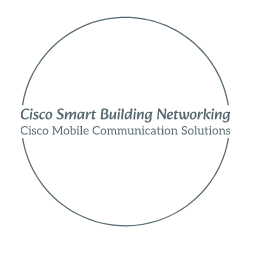“Do I Know This Already?” Quiz–Cisco Configuring a Network
Take the quiz (either here or use the PTP software) if you want to use the score to help you decide how much time to spend on this chapter. Appendix A, “Answers to the ‘Do I Know This Already?’ Quizzes,” found at the end of the book, includes both the answers and explanations. You can also find answers in the PTP testing software.

Table 23-1 “Do I Know This Already?” Foundation Topics Section-to-Question Mapping Caution
The goal of self-assessment is to gauge your mastery of the topics in this chapter. If you do not know the answer to a question or are only partially sure of the answer, you should mark that question as wrong for purposes of the self-assessment.
Giving yourself credit for an answer you incorrectly guess skews your self-assessment results and might provide you with a false sense of security.
1. What can you do when the router prompt is followed by a greater-than symbol (>)?
a. View the router’s software version.
b. Configure just the router’s interfaces.
c. Configure the router’s hostname.
d. No commands are available at this level.
2. Which configuration will a router load when it reboots or powers on?
a. The boot ROM
b. The startup configuration
c. The running configuration
d. A configuration from the floppy disk or USB drive
3. What happens when you press the Tab key once you have typed part of a command?
a. The router attempts to complete the command.
b. Nothing.
c. The router gives you a list of possible commands at this point.
d. The router will ask you what you are looking for.
4. What is a configuration sub-mode?
a. Mode for configuring interfaces, processes, etc.
b. Mode for showing information about interfaces, processes, etc.
c. Mode for installing routes
d. Mode for shutting down the router
5. What does show cdp neighbors show you?
a. Routers physically connected to this device
b. Hosts physically connected to this device
c. Any other CDP-enabled device connected to this device
d. Printers connected to this device
6. What does the letter to the left of a route in show ip routes mean?
a. How long this route has been in the routing table
b. Which protocol installed this route in the routing table
c. How the router learned about this route
d. The order in which this route was learned
7. What packets will a router send toward the default route?
a. Any packet whose destination address does not fall within another route
b. Any packet whose source address does not fall within another route
c. Any packet whose destination address does not exactly match another route
d. All packets
8. Why would you want to run a dynamic routing protocol, like OSPF?
a. You do not need to configure static routes to reach every destination on every router
b. Because you want to learn OSPF
c. Because dynamic routing protocols, like OSPF, are easier to configure than static routing protocols, like BGP
d. Because you need to configure OSPF on only one router
9. What default action does an access list take?
a. Permit anything that does not match anything else.
b. Deny anything that does not match anything else.
c. Permit every other packet.
d. Deny every other packet.
10. How do you enable IPv6 on a router’s interface?
a. Just assign an IPv6 address.
b. You don’t need to do anything; IPv6 is automatically enabled.
c. Use the ipv6 enable command.
11. What changes will you see in the routing table on any router after adding a switch to the network?
a. None
b. The next hop for some routing table entries will change to the switch’s IP address.
c. The next hop for some routing table entries will change from an IP address to an interface.
d. The gateway of last resort will always point to the switch with the lowest identifier.
